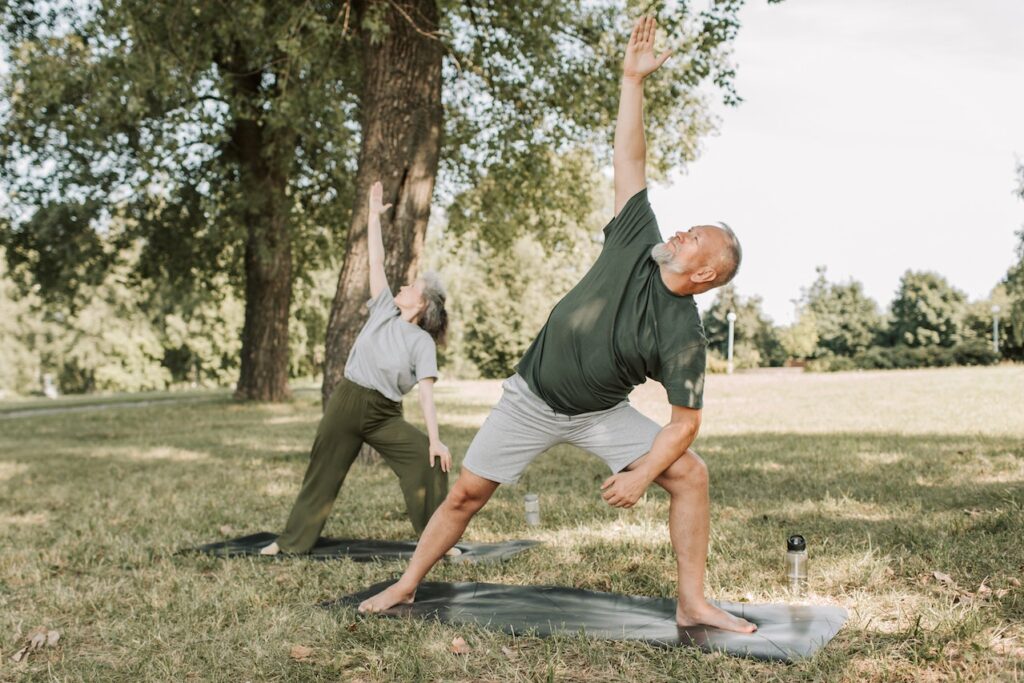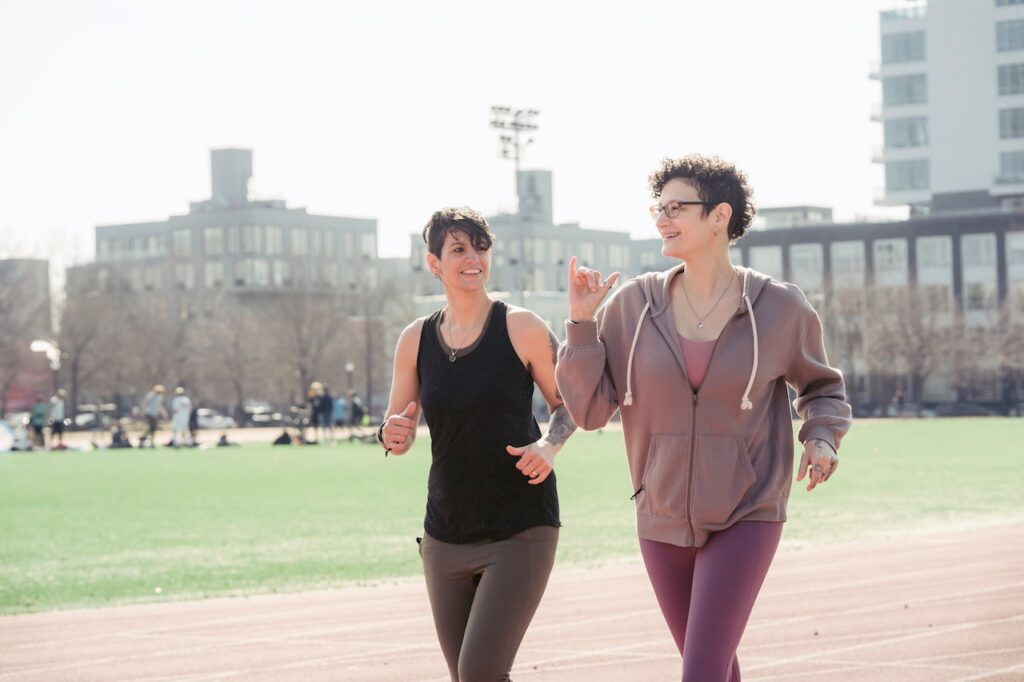Discover comprehensive information for all aspects of sexual health and find resources and guidance to empower your sexual well-being.
Prostate health is a critical concern for men, especially as they age. The prostate gland…
Discover comprehensive information for all aspects of sexual health and find resources and guidance to empower your sexual well-being.
Prostate health is a critical concern for men, especially as they age. The prostate gland…
Achieving and maintaining a strong penile erection is a common concern for many men. It…
Erectile dysfunction (ED) means having trouble getting or keeping an erection that’s good enough for…
Painful erections never indicate normalcy, and sometimes signal a medical emergency. Severe pain may necessitate…
Erectile dysfunction (ED) is a common condition that affects millions of men worldwide, causing distress…
The pelvic floor muscles are the unsung heroes of our body’s core, providing support to…
Commitment issues can often manifest in romantic relationships, work, and other personal or professional spheres.…
The decline of muscle mass, function, and strength is a significant contributor to the physical deterioration experienced as we age. Typically, muscle mass and strength progressively increase from birth until reaching a peak around 30 to 35. However, thereafter, muscle power and performance gradually decline.
Fortunately, adopting an active lifestyle can considerably slow down the average decline of strength and power associated with aging. While it is impossible to completely halt the effects of time, many older adults can increase muscle strength with exercise, which can help maintain mobility and independence into later life.
Table of Contents
ToggleStrength is the ability to produce force against an external resistance. It typically involves muscular power, endurance, and the capacity to lift, push, or carry heavy objects.
Strength training or resistance training, differs from aerobic exercises like running, cycling, or walking. It includes various forms, such as weightlifting using machines or free weights, utilizing medicine balls or resistance bands, and engaging in body weight-bearing exercises like pushups, squats, or yoga. The essence of resistance training lies in the contraction of our muscles as we lift objects against the pull of gravity.
The intensity of the weight we work against directly influences the rate at which our bodies use adenosine triphosphate (ATP), a molecule that carries energy to cells. As we lift weights or do other demanding exercises, our ATP reserves are replenished through a complex, coordinated metabolic and chemical response that cascades through the entire body, including sparking short-term chemical changes in the DNA of muscle tissue that make them more tuned to specific proteins supporting sugar and fat metabolism.
Developing strength makes daily tasks like carrying heavy groceries or actively playing with children much easier.

Moreover, strength training enhances athletic performance in sports that demand speed, power, and strength. Athletes engaging in activities such as sprinting, jumping, or lifting weights can experience improvements in their overall performance as they become stronger.
Strength training offers dual benefits in boosting your metabolism.
Firstly, when you build muscle through strength training, it elevates your metabolic rate. Muscles are inherently more metabolically active than fat, leading to a higher calorie burn even at rest. This increased muscle mass helps ramp up your metabolism, allowing you to expend more calories throughout the day.
Secondly, studies indicate that the impact of strength training on your metabolism extends beyond the actual workout session. Research suggests that your metabolic rate remains elevated for up to 72 hours following a strength-training session. This means that even hours and days after completing your workout, your body continues to burn additional calories at an increased rate.
Excess fat stored in the abdominal region is linked to a heightened risk of chronic ailments such as heart disease, fatty liver, type 2 diabetes, and certain forms of cancer.

In a study conducted by Harvard researchers and published in the research journal Obesity in 2014, a group of 10,500 men was followed for 12 years. The findings of the study revealed that strength training is more effective at preventing increases in abdominal fat compared to cardiovascular exercise.
As you increase your muscle mass and reduce body fat, you will notice a leaner physique.
This is primarily because muscle is denser than fat, meaning it occupies less space in your body pound for pound. Consequently, even if the number on the scale remains unchanged, you may observe a reduction in inches around your waistline.
Additionally, shedding body fat while simultaneously building stronger and larger muscles enhances muscle definition, resulting in a more prominent and toned appearance. This combination of fat loss and muscle development contributes to a stronger and leaner look.
Engaging in strength training helps decrease the risk of falls by improving your ability to support your body.

A comprehensive review involving 23,407 adults aged 60 and above demonstrated a 34% decrease in falls among individuals who participated in a well-rounded exercise program. This program included a combination of balance exercises, resistance training, and functional training.
Fortunately, various forms of strength training have proven to be effective in reducing the risk of falls such as tai chi, weight training, resistance band, and bodyweight exercises
If a muscle is too weak, it puts more stress on its connecting tendon and (over time) can result in tendinitis.
Incorporating strength training into your fitness routine yields numerous benefits for the strength, range of motion, and mobility of your muscles, ligaments, and tendons. This, in turn, helps fortify the integrity of major joints such as the knees, hips, and ankles, offering added protection against injuries.
Moreover, strength training plays a crucial role in addressing muscular imbalances. For instance, having a stronger core, hamstrings, and glutes alleviates stress on the lower back while lifting, reducing the risk of lower-back injuries.
A review involving 7,738 athletes revealed that strength-training programs contributed to a significant 33% reduction in the risk of injuries.
A study published in the Journal of Applied Physiology in 2013 revealed that young men who regularly participate in strength training exhibit better-functioning high-density lipoprotein (HDL), commonly known as “good” cholesterol, compared to those who do not engage in strength training.

According to a review published in the journal BioMed Research International in 2013, strength training enhances the muscle’s capacity to uptake and utilize glucose, commonly called blood sugar.
Within muscle cells, there are transporters responsible for capturing glucose from the bloodstream and transporting it into the muscle cells. Strength training plays a role in improving the functionality of these transporters, enabling them to more efficiently uptake glucose from the blood and transfer it into the muscle cells. This process ultimately leads to a decrease in blood sugar levels.
A study conducted over 10 years followed 35,754 women and demonstrated a 30% lower risk of developing type 2 diabetes among those who incorporated strength training into their routine compared to those who did not.
Contrary to common misconceptions, engaging in strength training can enhance your flexibility.
Strength training positively impacts the range of motion of a joint, leading to improved mobility and flexibility. A study published in the journal Isokinetics and Exercise Science in 2017 demonstrated that strength training can effectively improve flexibility in both men and women.

Furthermore, a previous study published in the North American Journal of Sports Physical Therapy in 2006 suggests that eccentric strength exercises may offer the greatest benefits for flexibility. These exercises focus on muscle lengthening rather than muscle contraction. Examples of eccentric exercises include the lowering phase of a squat or the controlled raising of the bar during a lat pull-down. Implementing these eccentric movements into your strength training routine can significantly improve hamstring flexibility, surpassing the benefits of static stretching exercises.
Certainly, exercise influences body composition and physical appearance. However, research, such as a 2013 study published in the Journal of Extension focusing on middle-aged and older women, indicates that regular strength training has a positive impact on body image and perceived physical appearance, regardless of the actual aesthetic outcomes.

Improvements in mental health, increased energy levels, and feelings of accomplishment associated with consistent strength training are the key factors driving the enhancement of overall body image and self-confidence.
Strong bodies have strong bones and strength training plays a significant role in increasing bone mineral density. Any weight-bearing exercise that involves standing and experiencing the pull of gravity on the body can effectively stress and strengthen both bones and muscles.
Additionally, when muscles contract, they exert a pulling force on the bones they are connected to. This action stimulates bone cells to produce structural proteins and facilitates the movement of minerals into the bones.
A study published in the Journal of Family and Community Medicine in 2014 found that just 12 weeks of strength training with squats resulted in a 2.9% increase in lower spine bone mineral density and a 4.9% increase in femur (thigh) bone mineral density. These findings highlight the effectiveness of strength training in enhancing bone health.
Engaging in regular weight training exercises can have a positive impact on your mood and contribute to improved mental health.

Numerous studies have consistently demonstrated that strength training has the potential to reduce anxiety and uplift your mood. Strength training offers various benefits for regulating mood, including an increase in self-esteem and self-efficacy. Additionally, exercise triggers the release of endorphins, which are known as “feel-good” hormones, and can significantly contribute to fostering a positive mood.
Strength training has the potential to enhance cognitive abilities (e.g., processing speed, memory, and executive function) throughout a person’s life, but its effects are particularly notable in older adults experiencing cognitive decline. A study published in the Journal of American Geriatrics in 2016 demonstrated that individuals between the ages of 55 and 86 with mild impairment experienced significant improvements in their cognitive test scores after engaging in weight training twice a week for six months. In contrast, participants who focused on stretching exercises during their workouts showed a decline in cognitive test scores.
This is because high-intensity strength training promotes the flow of blood, oxygen, and nutrients throughout the body, including the brain.
Engaging in strength training can have a positive impact on your overall quality of life, particularly as you age.
Multiple studies have established a strong association between strength training and increased health-related quality of life. This term refers to an individual’s subjective perception of their physical and mental well-being. Notably, a review of 16 studies involving adults aged 50 years and older revealed a significant correlation between resistance training and improved mental health, physical functioning, pain management, general health, and vitality.
Studies indicate that strength training has the potential to improve sleep quality, which is crucial for maintaining overall physical and mental well-being. By engaging in regular strength training, individuals may experience a reduction in fatigue and an increase in energy levels throughout the day.

Furthermore, incorporating strength training into a routine can help the body establish a regular sleeping pattern and alleviate stiffness and aches that can disrupt sleep. Danielle Gray, a trainer and founder of Train Like A Gymnast, emphasizes that strength training can contribute to better sleep by addressing these issues, particularly for former gymnasts, dancers, and cheerleaders.
However, it is important to note that intense strength training should be avoided within 90 minutes of bedtime. This is because it may makes it more challenging for some individuals to fall asleep. Research suggests allowing sufficient time between a workout and bedtime to ensure optimal sleep quality.
As we age, our ability to respond to exercise naturally diminishes. It is important to recognize that individuals, even exceptional athletes who continue to excel in their 40s, will not experience the same physical responses to exercise at age 70 as they did in their 30s or 40s. So, what are some practical tips to maintain strength and mobility as we age?
Set realistic expectations. Avoid comparing yourself to younger individuals, as everyone ages differently. Focus on your unique journey and progress.
Engage in mindful movement. Incorporating exercises that combine mindfulness, balance, and movement, such as tai chi and yoga, can enhance strength in these areas and help prevent falls and fall-related injuries.

Make exercise a daily habit. Even if group classes are not your preference, it is still possible to incorporate exercise into your daily routine. Walking more is an accessible and effective option. Whether it is walking around your house, office, or to the store, every step counts. Additionally, consider taking short exercise or stretching breaks every 15-20 minutes while at the office to engage and activate all your muscles.
Maintain enjoyment and set realistic goals when it comes to exercise. Find activities that you genuinely enjoy and want to participate in, rather than exercising for the sake of it. Consider your personal preferences and interests. Goal setting is also crucial. Identify everyday tasks or activities that you want to be able to continue doing as you age, such as playing with grandchildren or effortlessly managing household chores like carrying laundry up and down the stairs. Remember, exercise encompasses various forms and doesn’t have to be limited to traditional workouts. It can involve activities like dancing, gardening, or even housework.
For helpful resources to get started, refer to the WHO Physical Activity Guidelines.
“Engaging in any form of physical activity is more beneficial than being inactive. Even a few minutes of exercise per day can make a difference, and small changes can lead to significant improvements.”
References:
Dr. Nishtha, a medical doctor holding both an MBBS and an MD in Biochemistry, possesses a profound passion for nutrition and wellness. Her personal journey, marked by significant struggles with physical and mental health, has endowed her with a unique empathy and insight into the challenges countless individuals face. Driven by her own experiences, she leverages her background to offer practical, evidence-backed guidance, empowering others on their paths to achieving holistic well-being. Dr. Nishtha truly believes in the interconnectedness of the mind and body. She emphasizes the significance of understanding this connection as a crucial stride toward attaining balance and happiness in life.

